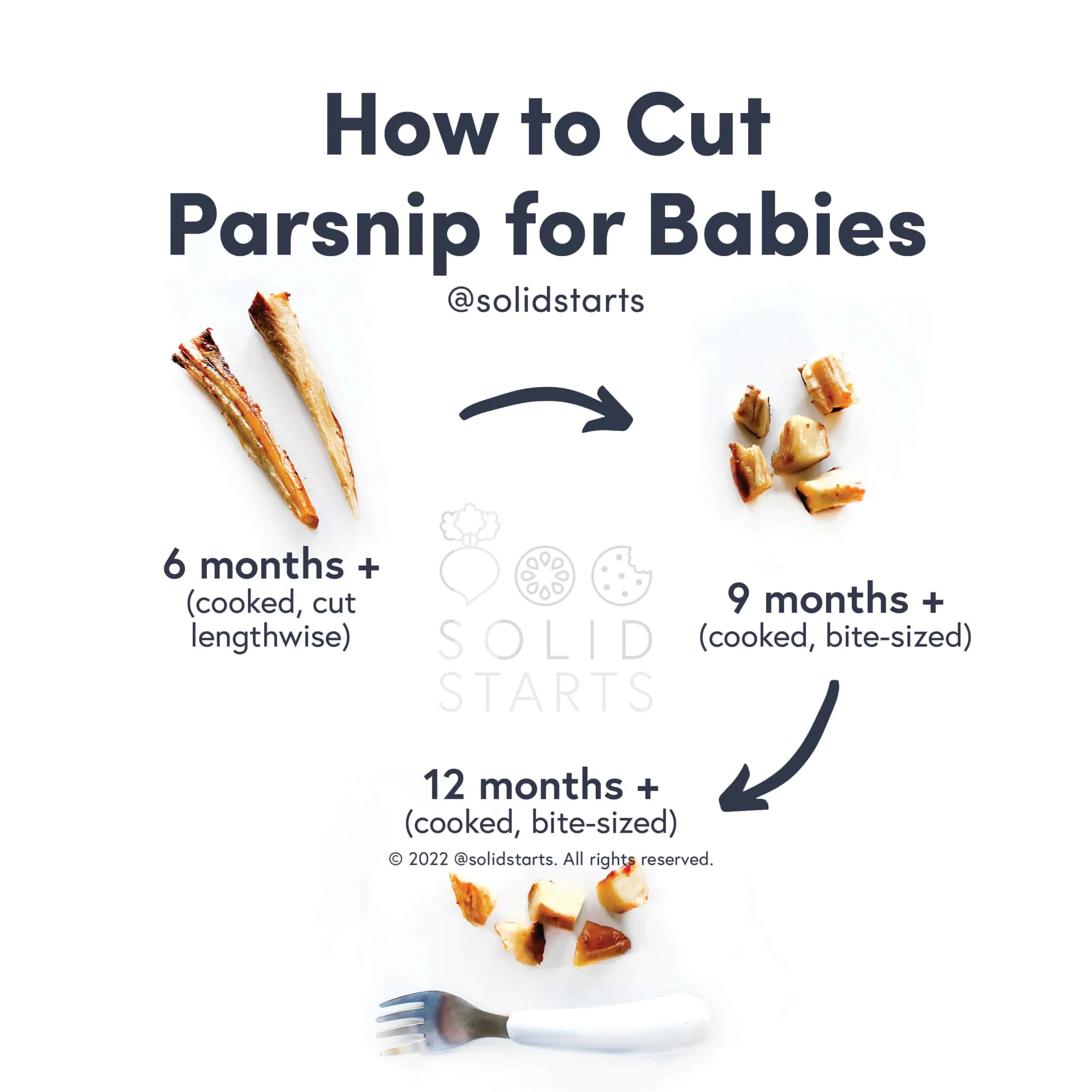Acceda a la base de datos First Foods® en Solid Starts App.
Leer másChirivía
Vegetal
Sugerencia de edades
6 meses
Alto contenido de hierro
No
Alérgeno común
No

When can babies eat parsnips?
¡Lo sentimos, esta página aún no está disponible en español! Estamos trabajando tan rápido como podemos para traducir todo nuestro contenido, gracias por tu paciencia y apoyo.
Parsnips may be introduced as soon as your baby is ready to start solids, which is generally around 6 months of age.
How do you prepare parsnips for babies with baby-led weaning?
Cada bebé se desarrolla a su propio ritmo, y las sugerencias que ofrecemos sobre cómo cortar o preparar determinados alimentos son generalizaciones para una amplia audiencia.
6 to 12 months old:
Offer large, long pieces of cooked parsnip cut lengthwise. At this age babies love holding large pieces of food for easy munching and it is actually safer to give young babies large pieces of food as smaller pieces could be accidentally swallowed whole. Another way of introducing parsnips: mash the cooked parsnips and mix with a little unsalted butter, olive oil, or fat of your choice.
12 to 24 months old:
Use parsnips in place of any root vegetable in a recipe. You might continue offering cooked parsnip cut into matchsticks as finger food, small pieces to encourage fork practice, mashed parsnips, or parsnips folded into salads and grain dishes.
How to prepare parsnips for babies.
Parsnips have an earthy flavor and hearty texture that make the root a great substitute for meat. Try swapping parsnips in savory pies, casseroles, tacos, or any dish that call for ground meat.
¡Lo sentimos, esta página aún no está disponible en español! Estamos trabajando tan rápido como podemos para traducir todo nuestro contenido, gracias por tu paciencia y apoyo.
For more information on how to cut food for babies, visit our page on Food Sizes & Shapes.
Videos
Are parsnips a common choking hazard for babies?
If they are raw, yes—parsnips can be a choking hazard. To minimize the risk, cook parsnips until soft before serving to your baby, and avoid cutting raw or cooked parsnips into coin-shape pieces. (Long matchsticks would be best.)
For more information, visit our section on gagging and choking and familiarize yourself with common choking hazards.
Are parsnips a common allergen?
No. That said, in theory an individual can be allergic to any food. As with introducing any new food, start by serving a small quantity on its own for the first couple of times, and if there is no adverse reaction, gradually increase the quantity over future servings.
Are parsnips healthy for babies?
Yes. Parsnips are an excellent source of copper, fiber, folate, and vitamin C in addition to a wide range of other nutrients and lots of healthy carbohydrates to fuel your baby’s body with energy. They’re a terrific vegetable to include in regular rotation in your baby’s diet as they help support the immune system, eye health, heart function, iron absorption, a healthy gut and bowel movements, and overall growth.
Background and origins of parsnips
Parsnips are white root vegetables that are often mistaken for carrots—but they are quite different. Starchy and sweet with a more fibrous texture, parsnips are a great first food to introduce to babies as they are super versatile. In fact, parsnips have a long history as a staple food for many cultures, including ancient Greeks and Romans who favored the vegetable for its many culinary uses. They can be steamed and mashed, folded into grain dishes, and even mixed into baked goods like breads and muffins.
Escrito y revisado por los/las siguientes especialistas
Consejos de expertos directo a tu bandeja de entrada
¡Suscríbete y recibe correos semanales con recetas, consejos y más!
Copyright © 2025 • Solid Starts Inc


